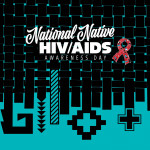 |
| Vickie Lynn |
Tremendous change has occurred in the HIV community over the past few decades. We have seen improvements in prevention, treatment, care, health outcomes, and quality of life. We have also witnessed changes in how we access health insurance, care and treatment.
One of the most prevalent changes has been the reduction in deaths related to an AIDS diagnosis. Since 1981, 650,000 people in the United States and an estimated 39 million people globally have died of AIDS-related complications. Although the number of annual deaths has decreased, and we now have medications that can control the virus, people are still dying.
They die because they did not receive an HIV test in time or they could not access needed care and treatment. In the United States, in 2012, an estimated 13,712 deaths were attributed to AIDS-related complications. This number is 13,712 deaths too many. Some may die because our current system of care is fragmented and only meets a small portion of their physical and psychological health needs.
The fact that anyone in the United States is still dying from AIDS-related complications is a prime example of why the HIV community needs to continue working together for change. We need to continue to advocate for changes so everyone living with HIV can access needed physical and mental health care treatment.
This is one of the reasons my research interests include looking at the system level factors affecting adoption and implementation of integrated care. Holistically treating people with chronic health conditions is an innovative solution to our current system of care. We need to continue to educate others of the issues facing our community and the need for increased access to both physical and mental health care.
When I contracted HIV 30 years ago, there were no medications to help fight the virus; there were no treatments to slow the progression of the disease or to deal with the multitude of issues brought on by the lack of an immune system. There was little hope that anyone diagnosed with HIV would survive more than a few years. Many of us found ourselves rejected by our families, homeless without access to care and treatment, and void of any hope. Even when medications were discovered, we faced health care bureaucracy that limited our ability to access care and treatment and we lost many friends along the way.
Enormous changes have occurred over the past few decades. We have seen countless research developments including the discovery of AZT in the mid 1990s, to the development of dozens of new medications and now we have pre-exposure prophylaxis (PrEP) to prevent the transmission of HIV. We have witnessed tremendous changes in how others view people living with HIV. Although there is still fear, discrimination and stigma, there is also acceptance, love and compassion. But most of all there is hope. Hope for everyone who is currently living with HIV, hope for those who may contract HIV in the future. There is hope for all.
People diagnosed with HIV today can expect to live a normal life span, as long as they are in care and treatment. Many people will remain in HIV Stage 2 and never progress to Stage 3. There have been countless medical discoveries allowing us the opportunity to maintain our immune system and control the amount of virus in our body, thus reducing the risk of transmitting HIV to others. This has allowed many of us to return to school, to follow our hopes and dreams, to find love for ourselves and others, and to find a life worth living.
The HIV community in the United States has grown by almost 50,000 new members every year for the past decade. The new members come from all occupations and lifestyles, all genders, all races, and all religions. Although we wish there were no more new members, we still welcome them no matter where they come from or what background they have. We are a community of people living with HIV who are here to support one another.
When I talk to people outside the HIV community, they seem confused and often ask, “Why do you call it a community?” I reply that I have always called those of us living with HIV a “community” from as far back as I can remember. We are a community. Doesn’t everyone see us as a community? A community is “a group of people living with the same or having a particular characteristic in common.” The definition goes on to say a sense of community is “a feeling of fellowship with others, as a result of sharing common attitudes, interests, and goals.” This is exactly what we are, right? We are a community — the HIV community.
Those of us living with HIV are a group of people who have a similar illness but may come from different lifestyles, different worlds, but we work together helping to fight for the rights of people living with HIV everywhere. We are a community. We do have a feeling of fellowship with one another; many of us share common attitudes, interests, and goals. We all want access to affordable care and treatment. We want to be treated with dignity, respect, and equality. We want the freedom to love and live as we choose. We want to eliminate stigma and discrimination. And most of all, we want a cure for HIV.
Although there have been numerous changes in the HIV community over the years. I believe we are and always have been a community and my hope is we will always stay a community.
Vickie Lynn, MSW, MPH, is a doctoral student at the University of South Florida. She was a 2015 POZ 100 honoree.







Comments
Comments